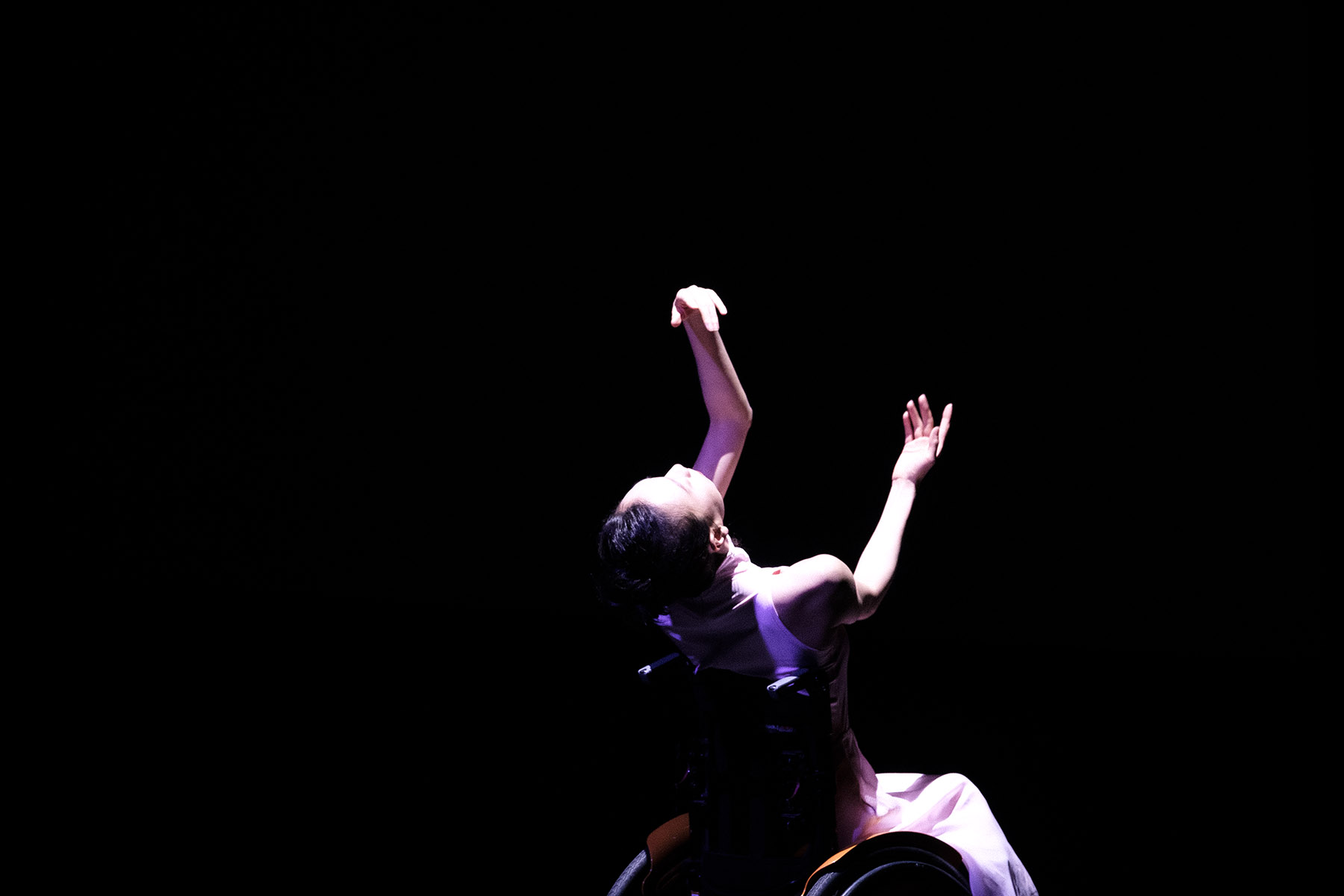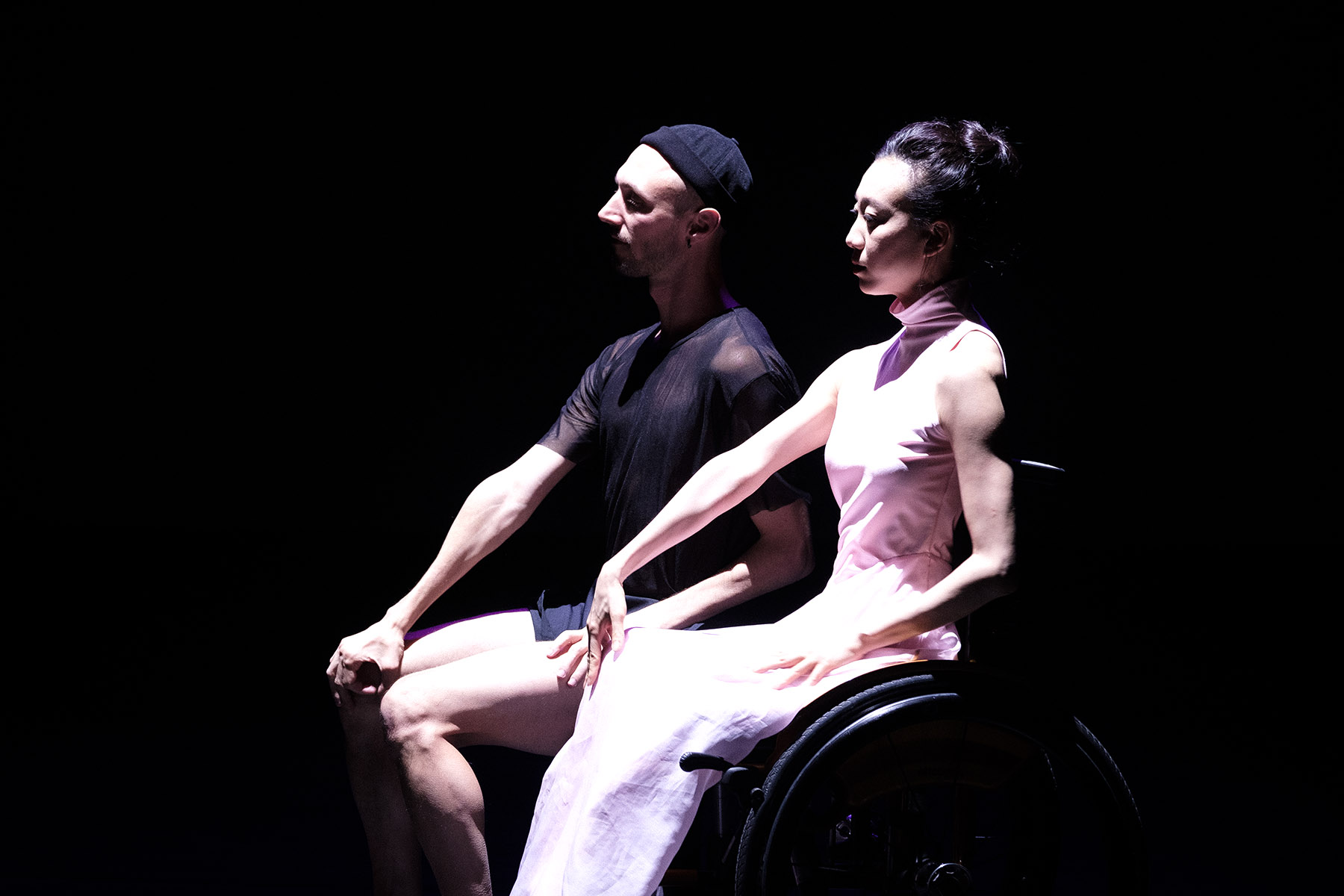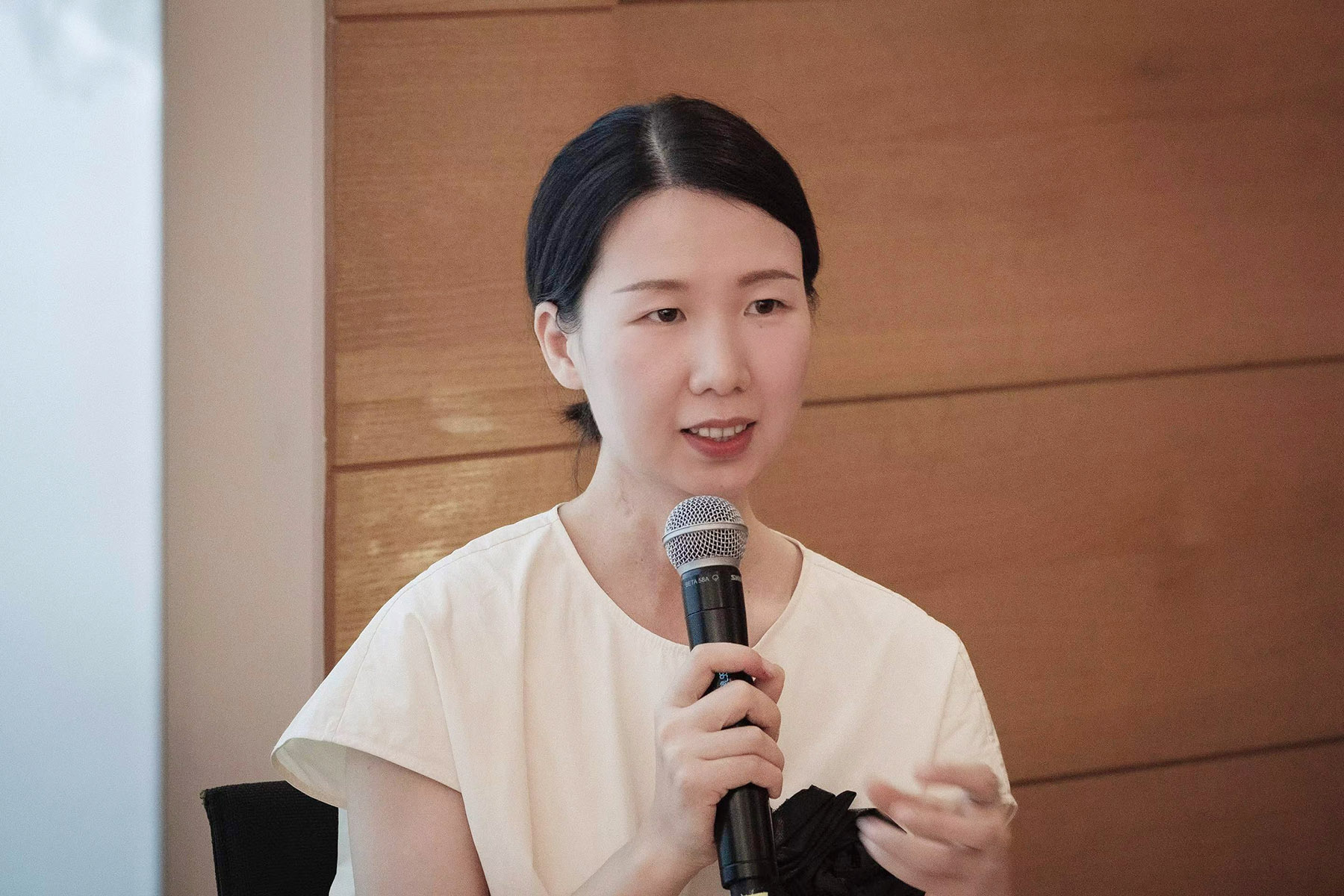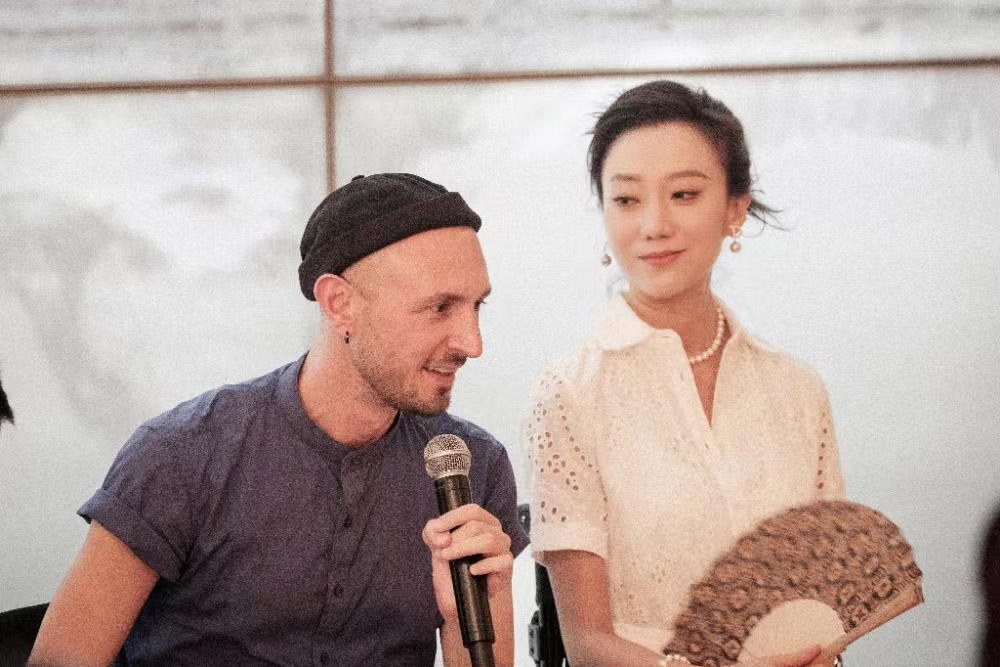Sino-Swiss production discovers new creativity in physical limitations, pushing the boundaries of art, Cheng Yuezhu reports.

As dancers, Liu Yan and Alessandro Schiattarella come from different backgrounds — Liu, born and raised in China, specializes in traditional Chinese dance, while Schiattarella, who comes from Switzerland, is trained in ballet.
Yet in a new dance theater production, Handling Hands, staged at the National Centre for the Performing Arts in Beijing on July 6 and 7, they joined hands, a motif key to both their personal and creative journeys.
Schiattarella received ballet training when he was young, but since the age of 15, he has been affected by Hirayama disease, a neurological disorder that gradually weakens the muscles in the hands.
READ MORE: DC welcomes Chinese adaptation of The Nutcracker
The disorder hinders the performance of certain hand gestures required in ballet. For some time, he tried to conceal the deterioration by taping his hands up, and continued to perform onstage.
"I was good enough to stay, but my hands could not keep up with my other talents. I had this clash between what my body could do and what it could not do in ballet. This slowly made me realize that these challenges can be very heavy in the long term. From then on, I tried to detach for a moment from the canons of beauty in ballet," he says.

Schiattarella began to face the weakness in his hands through dance productions, notably Altrove+, a solo dance he performed earlier this year in Beijing, which integrates choreographic elements centered on his hands.
The seed for the Sino-Swiss production Handling Hands germinated in May 2023, when Ge Huichao, founder of Beijing Body On&On Cultural Exchange Center, took a trip to Europe.
In 2019, Ge established the annual Luminous Festival, which centers on inclusive arts and organizes lectures, forum discussions, stage productions and screenings to promote inclusiveness and equality.
Upon learning about Schiattarella, Ge immediately thought of Liu. Inspired by the similar changes to their lives, she envisioned a dance project that would connect them.
An acclaimed classical Chinese dancer, Liu was chosen as lead dancer for a performance during the 2008 Summer Olympics opening ceremony in Beijing, but an accident during a rehearsal resulted in spinal injuries.

Hand dancing became Liu's new form of expression, and after finishing a doctoral degree, she became a professor at the Beijing Dance Academy. Her research includes the hand movements in classical Chinese dance, as well as their relationship to Buddhist mudras (symbolic hand gestures).
"Over the past 16 years, as I have started to reexamine dance, I feel that my perception has broadened. I still find traditional Chinese dance extremely beautiful, but there are other elements in dance that are more encompassing, powerful, and possess a different quality," Liu says.
"Another insight is that a new dimension of my life has opened up. While I used to focus solely on performing, I have now also begun to create, teach and research."
When the two dancers first met, they jotted their interests down on paper in an attempt to find common directions to explore as part of a collaborative production.
"The topic of hands was there from almost the first moment, because Liu Yan wrote two books about hands, and I created work about hands that was also presented here in China. This was our first point of connection, and was very strong," Schiattarella says.
"I remember a line from one of Liu's books, where she said that hands were her new means of expression. It is the same for me. We come from different cultures, but we're so connected by something I found really striking. I felt that we had to go further into this."

In choreography devised and performed by both dancers, they tell their own stories and communicate with each other via intricate hand gestures and movements that blend both Chinese and Western classical and contemporary dance elements, amplified and highlighted by lighting.
For Schiattarella, the production draws from autobiographical dance pieces in which he explores the movements his hands are able to perform, but also adds cultural elements, such as those of his birthplace Naples, in Italy.
"There is a tradition of using hands in specific ways in daily life in Naples. Neapolitans speak a lot with their hands, to the point that there are books describing all the gestures. Then we also dug into the arts, the iconic images of hands in paintings and sculptures, to enrich the choreography," he says.
For the production, Liu choreographed a section specifically using hand movements from traditional Chinese dance. She says that while the basic hand gestures in ballet are the same for men and women, some of the dozens of hand gestures in traditional Chinese dance are specific to certain genders.
Initially concerned about whether the different genres would work together in the same production, Liu says that when she heard the music, she spontaneously began to interpret it through dance.
ALSO READ: Increasing of young people savor beauty of dance dramas
"For me, this section flows naturally with the other passages, which represent an interesting contrast of cultural differences," she says.
The music is composed by Li Bo and Zhang Yong, the two founders of Silent Choir, an ensemble of children and teenagers with hearing impairments. For the production, they used a pipa (a four-stringed lute) to imitate the sound of Neapolitan music.
As the production's producer and dramaturge, Ge says that the creation and rehearsal process involved constant brainstorming of imagery related to hands, resulting in a harmonious blend of the contemporary, the classical and the folk.
"I hope that the audience will feel the production's sense of fun, uniqueness and inclusiveness. I feel that it is a bold collaboration and exploration based on the connection between the two artists," Ge says.
The production is sponsored by Pro Helvetia, the Swiss Arts Council, with the aim of promoting Sino-Swiss cultural exchange and supporting inclusive arts.
"From my experience of promoting inclusive arts, I know how challenging it is to work in this field, and we deeply appreciate the talent, possibility and creativity of artists with disabilities," Ge says.
"We look forward to fostering inclusive arts exchanges between China and Switzerland, beginning with Handling Hands, a fine starting point for future collaboration."
Contact the writer at chengyuezhu@chinadaily.com.cn



